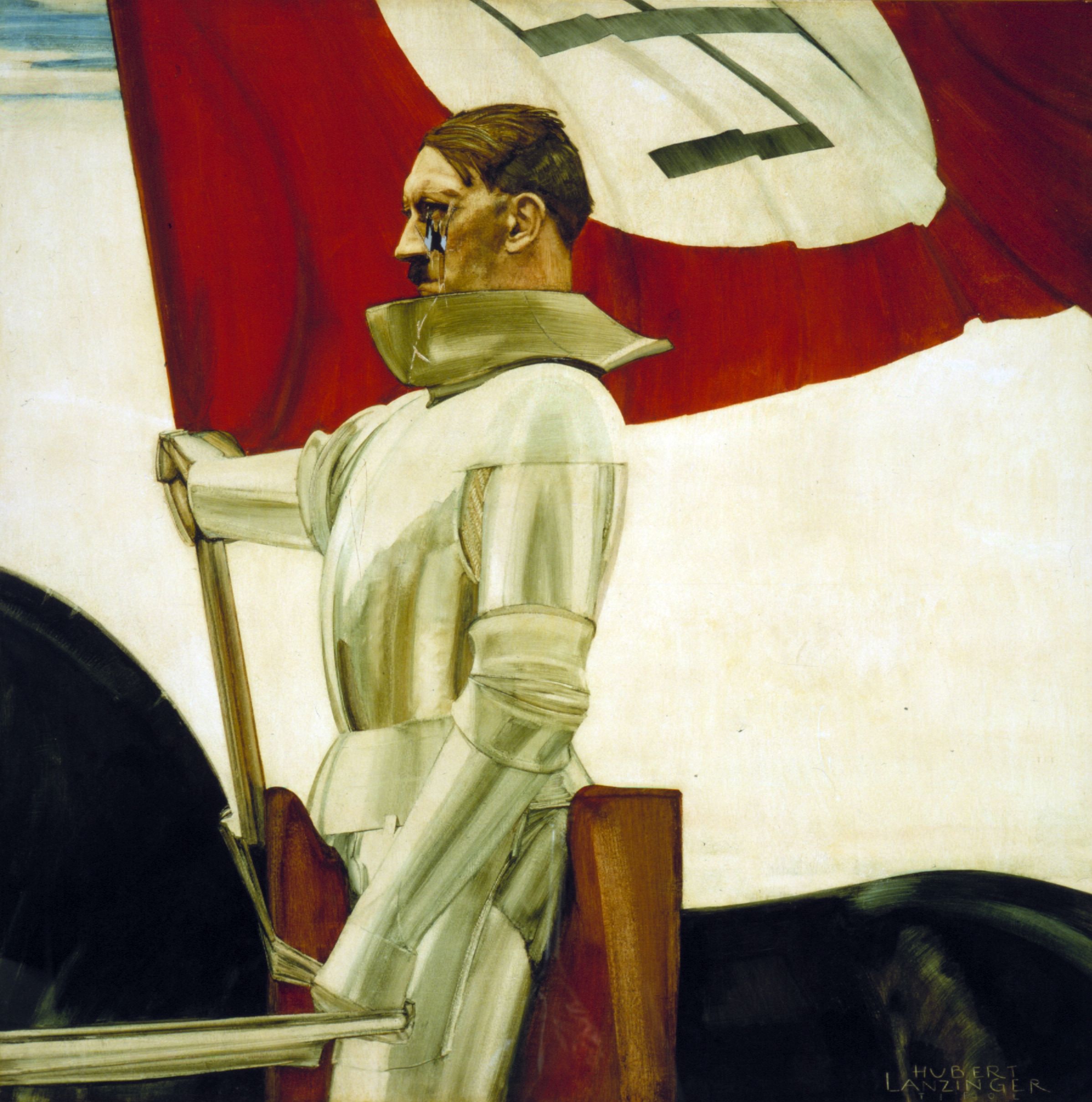“Horror always lurks at the bottom of the magical world and everything ‘holy’ is always mixed with horror”
– A passaged underlined by Hitler in his copy of Ernst Schertel’s Magic: History, Theory and Practice (1923)
From the very second Adolf Hitler stepped in front of a packed audience, onlookers reached toward the otherworldly to describe his powers. Those enthralled by his venomous strongman creed of Aryan superiority saw him as a messianic figure, the ‘magician’ of Ernst Schertel’s feverish writings, while those who began to fear for their own lives saw something demonic.
The seemingly impossible ascent of this diminutive demagogue and his string of victories against the once so proud French and British, and of course that great Soviet evil to the east, demanded an easy explanation.
In 1973 a British writer called Trevor Ravenscroft offered one. Spear of Destiny: The Occult Power Behind the Spear Which Pierced the Side of Christ was a sensation, in it Ravenscroft revealed how as a struggling artist in Vienna, Adolf Hitler had been captivated by a tour guide’s tale of the Holy Lance (also known as the Hofburg Spear). One of the crown jewels of the Holy Roman Emperors, the Hofburg Spear was said to be the Spear of Destiny, used by the Roman legionary Gaius Cassius Longinus to pierce the side of Christ at the Crucifixion.
This great gilded lance, the guide told him, had been carried by Roman Emperor Constantine the Great, Frankish warlord Charles Martel and a litany of German conqueror kings, emboldening them with its supernatural power. A gloriously overworked mess of steel, iron and brass, the Hofburg Spear is embedded with what was said to be one of the nails from the cross, capped with a silver band and then cloaked in gold sometime around the 14th century. Like the gaudy false chalices at the climax of Indiana Jones and the Last Crusade, it certainly looked the part, and its inscription went well out of its way to assert itself as “Lance and Nail of the Lord”
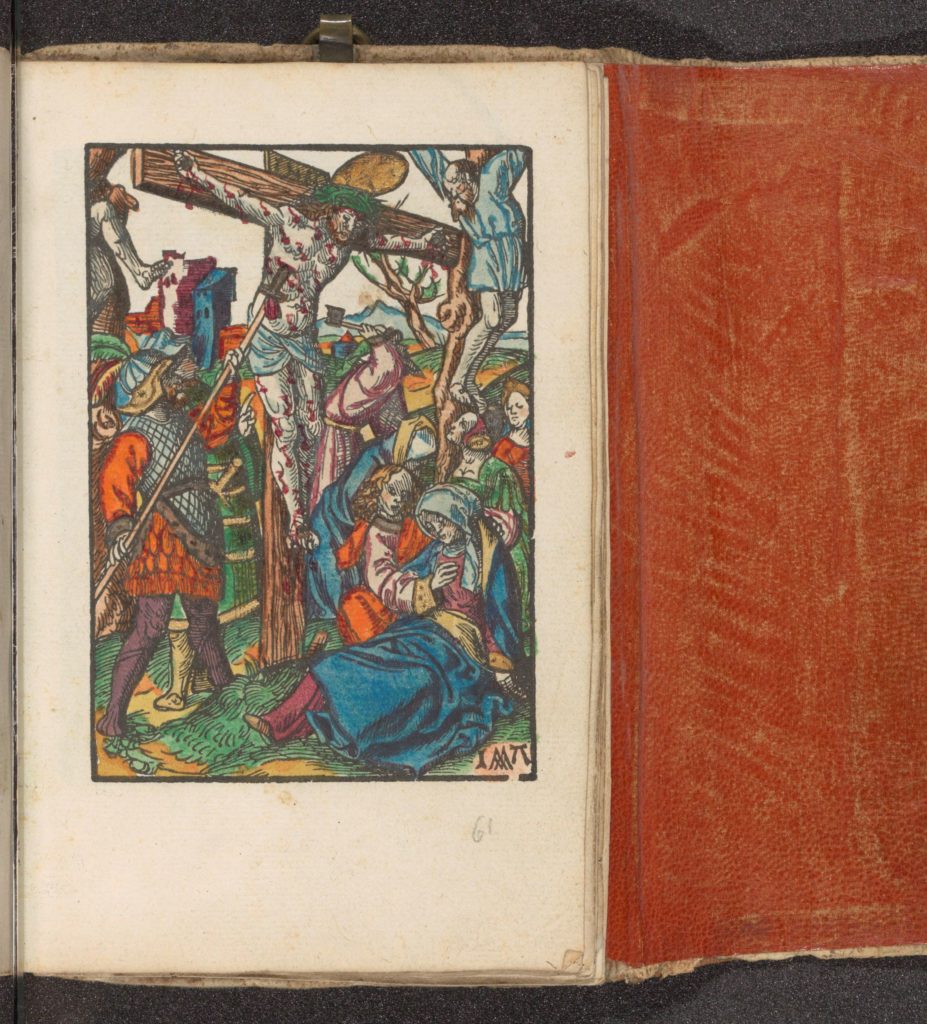
Though nudging against the unbelievable, to the layman Ravenscroft – a suspiciously suitable name for a seeker into occult mysteries – seemed a credible source. A British Commando during World War II’s North Africa Campaign, Ravenscroft spent the bulk of the conflict in a POW camp and afterwards worked as a journalist for Lord Beaverbrook, publisher of the Daily Express and London Evening Standard, and latterly IPC, the 1960s stable of The People, Daily Mirror and The Sun.
As a source for his tall tale, Ravenscroft claimed to have befriended the German emigre occult writer Walter Johannes Stein toward the end of his life. A Viennese Jew and teacher at the esoteric Waldorff School in Stuttgart, from where he fled to London from the ascendent Hitler, Stein passed away in 1957 and Ravenscroft related how he had latterly studied in history under him before being given access to the scholar’s copious archives by the man’s widow after his passing.
Hitler had come to Stein’s attention through an annotated copy of Wolfram von Eschenbach’s Middle High German Arthurian Grail epic Parzival , which he stumbled across in a used book shop and felt driven to know who this ‘Adolf Hitler’ was, if not a kindred spirit. The two became occult fellow travellers (despite one of them being Jewish) and decades later, Hitler seized the Hofburg Spear as soon as the Nazis rolled into Austria and stole it away to a vault in Nuremberg, where it powered the unholy forward march of the Third Reich.
It this sounds contrived, it’s because it was. Throughout his life, Stein – obviously no lover of Hitler or his anti-Semitic new world order – said nothing of this seemingly vital piece of intelligence during the febrile peace of the late 1930s, nor during the war, or indeed afterwards, when the appetite for explanations, no matter how absurd, were at their height. His masterwork on Grail lore – 1928’s The Ninth Century and the Holy Grail – talks only of the Holy Lance’s role in 14th century epics, not of its role in more recent history.
While it’s true that Hitler was well aware of Grail myths – although their enthusiastic catalogue and pursuit was really a matter for Heinrich Himmler and his esoteric state within a state, the SS – and the Spear of Destiny as it appeared in the German epic Parzival, his enthusiasm for the latter came primarily from Wagner’s 1882 opera Parsifal. Wagner recast the Grail legend through a vaguely nationalist lens, or at least one through which the coming ultra-nationalists could project their own hateful visions, in which the Grail knight Parsifal is a “pure-blooded’ Aryan who overcomes the clearly Semitic Klingsor using the bloodied spear of Eschenbach’s earlier legend.
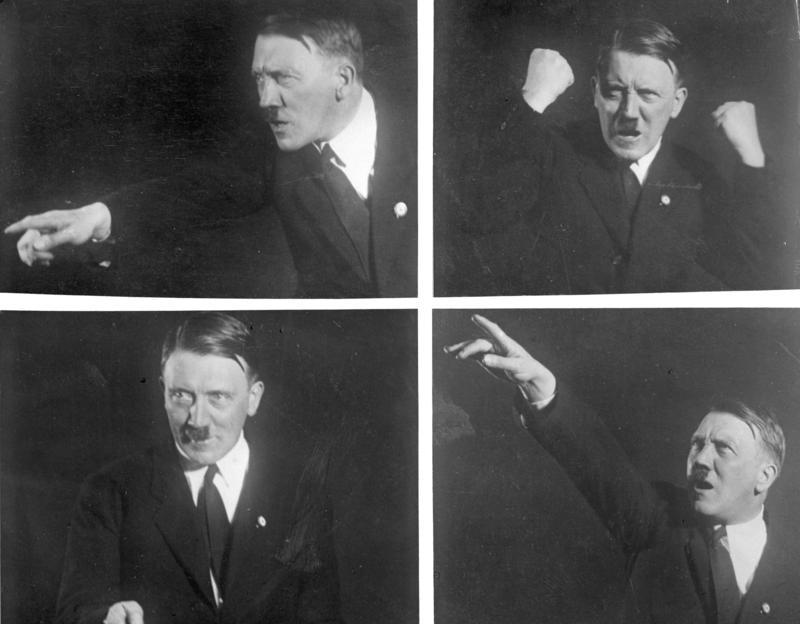
In September 1933, Hitler – who would invite national outrage for his violent Beer Hall Putsch less than two months later – visited Wagner’s villa in Bayreuth and was greeted enthusiastically by the composer’s widow, Cosima, and children, Winifred and Siegfried. Winifred later recalled that Hitler “visited the Master’s grave alone, and came back in a state of great emotion, saying ‘Out of Parsifal I make a religion’.”
Also present at the meeting was Wagner’s English son-in-law, Houston Stewart Chamberlain, whose own writing on the subject of Aryan superiority made him a natural ally of the Austrian demagogue and Hitler took great pains to ingratiate himself into the ’Bayreuth Circle’, a clique of nationalists linked to the Wagner family and the the annual Bayreuth Festival of the late composer’s music.
Despite the treasonous scale of Hitler’s crimes in the putsch of November 1923, his trial in June 1924 was a soft soap affair presided over by sympathetic conservative judges who viewed nationalists of Hitler’s ilk as a necessary bulwark against the real enemy, Communism. With the courtroom as his stage and the press gathered in the gallery, Hitler held forth his views on all manner of matters (ideas he would later develop into the rambling Mein Kampf during his subsequent imprisonment.) In one of these monologues, Hitler referred back to his vigil at Wagner’s graveside, saying:
“The first time I stood in front of Wagner’s tomb my heart was filled with pride… I was proud that this man, and so many men, in German history, were satisfied to leave their name to posterity, not their title. It was modesty that made me want to be the drummer. That is of the utmost importance.”
This, perhaps is key to Hitler’s “religion” of Parsifal. As the ‘drummer’, Wagner was – in Hitler’s own words – “the greatest prophetic figure the German people, has ever had.” He revealed an heroic, masculine and Ayran vision of Germany fighting against corruption and compromise, and Hitler modestly claimed he could do the same – perhaps not yet wanting to paint himself as the heroic Grail knight of legend.
While we lack evidence to weigh in on his reading of Wolfram von Eschenbach’s original Parzival – the text that apparently led Stein to the would-be dictator’s alleged obsession with the Hofburg Spear – we have a good sense of what he took from Wagner’s telling of this same tale.
Unsurprisingly, it was allegory. There’s nothing to suggest that Hitler found any literal occult truth in the story, let alone Eschenbach’s original Perzival which unlike Wagner’s adaptation, doesn’t explicitly link the spear in the Grail Castle to the legendary Spear of Destiny.
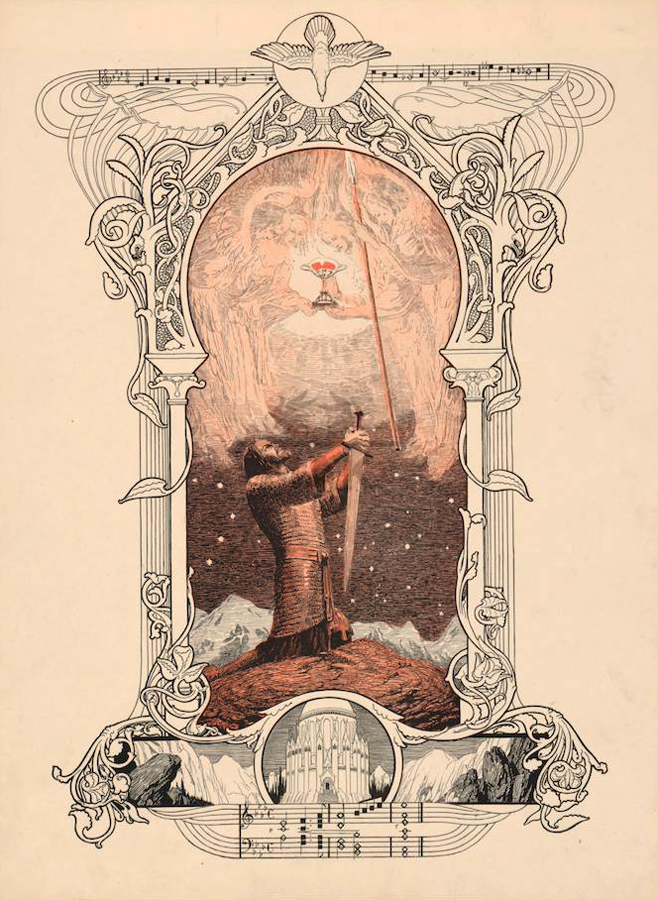
As for the Hofburg Spear that apparently captivated the destitute Hitler being the Biblical Spear of Longinus? Well, the the Holy Lance appears to have chalked up considerable milage if all the folklore is to be taken seriously. Circa 955, Vienna’s Hofburg Spear was aiding the Holy Roman Emperor Otto I (Otto the Great) in his Slavic Wars, yet by 1098 it had relocated to Antioch in order to be discovered beneath a cathedral by the men of the First Crusade – only this particular Spear of Destiny was an iron lump, supposedly all that remained of the ancient artefact. One has lurked in an Armenian monastery since at least the 13th century, while another has been recorded beneath the gilded cupola of Saint Peter’s Basilica, having been taken from Jerusalem to Byzantium in around the 8th century and onward to Rome in the 15th century (losing its tip to Paris somewhere on the way).
Of course all of these stories can be nonsense, contrived to tighten the bonds of faith in testing times, and in all likelihood they were. According to the Imperial Treasury itself, the Hofburg Spear dates from the 8th century, while an independent chemical test in 2003 offers up the 7th century – either way the lance is far too modern to match the mythology.
Yes, Hitler was interested in the occult but he was interested in it primarily as a device, as something uniquely German with which to bind the volk. He did indeed loot the Imperial Treasury of the Habsburgs and spirit the Hofburg Spear to Nuremberg along with the rest of the imperial paraphernalia, but he did so with a view to its symbolic power rather than its otherworldly potential. The possession of such visceral links to the glory Holy Roman Empire conveyed authority on his new ‘successor state’, the Greater German Reich, and while Hitler recognised the mythological footprint of the spear, he didn’t appear to find any real use for it beyond its highly symbolic relocation.
Nuremberg was chosen not so that Hitler could pop the vault and channel the pent up occult energies of the Hofburg Spear, but because the Free City of Nürnberg was the traditional home of the Imperial Treasury before the gradual disintegration of the Holy Roman Empire. It was a piece of pan-German propaganda first mooted by nationalist writer Harald Arjune Gravell von Jostenoode in 1906 to both erase the disastrous legacy of the Habsburg dynasty and recreate the Medieval magnificence of Germany’s supposed golden age – an argument Hitler would have not only been familiar with, but enthusiastically adopted.
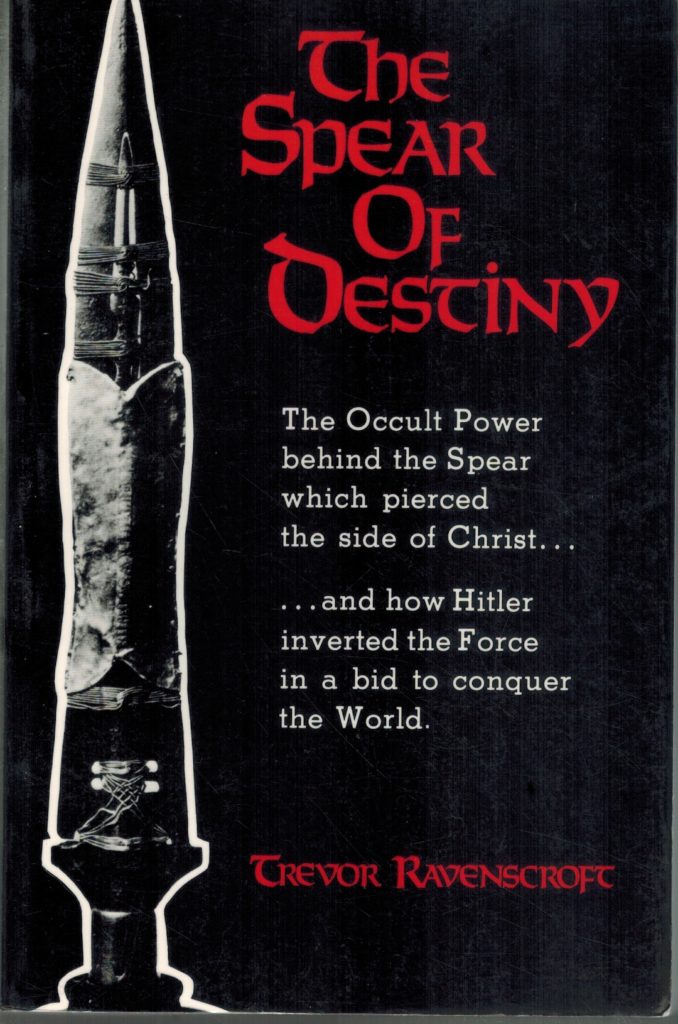
So even taking Trevor Ravenscroft and Walter Johannes Stein at their word, there’s little to back up the idea that Hitler had the slightest supernatural interest in the Spear of Destiny, let alone that he wielded it in occult rituals.
However taking Ravenscroft and Stein at their word also proves problematic. Five years after the publication of Spear of Destiny: The Occult Power Behind the Spear Which Pierced the Side of Christ, Ravenscroft took issue with The Spear, a horror novel by James Herbert, which covered very familiar ground. As the two legal teams waited at the High Court to contest the accusation of plagiarism, Ravenscroft revealed that he and Herbert had crossed paths before.
“I was on the right-hand of Christ and Herbert was on the other,” said Ravenscroft, explaining that in a past life the hack and the horror writer had been Dismas and Gestas, the thieves crucified alongside Jesus. The judge eventually ruled in favour of Ravenscroft, but the courtroom was the scene for further reveals about not only Ravenscroft’s worldview (he also added that during an out of body experience he had watched Herbert in the bath), but the nature of his relationship with Stein.
In truth the pair never met in Stein’s lifetime and the court recorded that Ravenscroft’s tome “was meticulously researched using a combination of empirical techniques and use of a psychic medium.”
The events described in Spear of Destiny were proven to be Ravenscroft’s intellectual property, because – for lack of a better description – they had no basis in fact, which capsized Herbert’s defence.
Herbert later recalled:
“A lot of it was quite extreme and what I failed to recognise was what parts were gained by ‘transcendental meditation’, and what were historical facts. I was sued for using what I believed were historical facts but were actually gained by transcendental meditation – that is exclusive to Ravenscroft.
“We dug up a lot about Ravenscroft, and he was a dodgy character, to the extent where his publisher came to court as our witness. But my QC said that we couldn’t make out the man to be a charlatan because it would provoke the question, ‘Why did you use him in the first place?’”
Ravenscroft passed away in 1989, finding time for one further tilt at nonsense with The Cup of Destiny: The Quest for the Grail, but despite the revelations of Ravenscroft vs New English Library and the lack of anything resembling evidence, Hitler and the Spear of Destiny maintain common currency in the popular imagining.
As recently as 27 June 2017 British tabloid newspaper the Daily Star gleefully honked “Is this the REAL reason Hitler started WW2? Nazis obsessed with ‘weapon that killed Jesus’” while in April 2017 second series of the US superhero TV show Legends of Tomorrow witnessed the Spear of Destiny stolen from Vienna and deployed by a sinister Legion of Doom for predictably nefarious ends.
In both fiction and what passes for fact, the Hofburg Spear and its supposed links to Nazi Germany loom large, a somewhat depressing attempt to attribute real horrors to supernatural imaginings rather than confront the complexity of their real causes.
For more on the Third Reich, subscribe to History of War for as little as £26.
Sources:
- Black Sun: Aryan Cults, Esoteric Nazism, and the Politics of Identity by Nicholas Goodrick-Clarke
- Lucifer Rising: British Intelligence and the Occult in the Second World War by Nicholas Booth
- Hitler’s Monsters: A Supernatural History of the Third Reich by Eric Kurlander
- Kunsthistorisches Museum, Vienna: The Imperial and Ecclesiastical Treasury by Rudolf Distelberger and Manfred Leithe-Jasper
- Adolf Hitler: A Psychological Interpretation of his Views on Architecture, Art, and Music by Sherree Owens Zalampas
- https://academic.oup.com/rpc/article-abstract/97/7/193/1609821/RAVENSCROFT-v-HERBERT-AND-NEW-ENGLISH-LIBRARY?redirectedFrom=fulltext
- James Herbert – The Authorised True Story 1943-2013 by Craig Cabell
